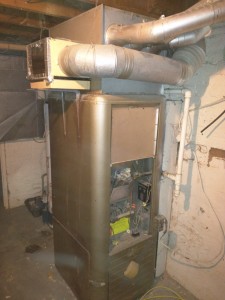The Ultimate Overview to Heater Setup for a Cozy Home
Heater setup is a vital aspect of preserving a comfortable home setting, specifically throughout the colder months. As you think about these factors, the inquiry remains: what actions can you take to guarantee your heating system offers you well for years to come?
Types of Heaters

Gas heating systems are one of the most common choice as a result of their effectiveness and reduced functional expenses. They use gas or propane, providing fast home heating and regular efficiency, making them suitable for chillier environments.
Electric heaters, while usually less complicated to set up and keep, often tend to have greater operational expenses. They are typically favored in areas where gas service is unavailable or for homes with existing electrical framework.
Oil heaters, though less typical today, continue to be a feasible alternative in certain areas. They burn home heating oil, which can be advantageous throughout colder months, yet their dependence on oil shipment poses potential challenges.
Furthermore, there are high-efficiency versions readily available throughout these types, which can significantly decrease energy usage and utility expenses - furnace installation. Ultimately, recognizing these heating system kinds will certainly help house owners pick a system that lines up with their heating needs, budget plan, and power choices
Picking the Right Dimension
Choosing the appropriate size for a heating system is important to guaranteeing optimum performance and energy effectiveness. A small furnace will have a hard time to maintain comfy temperatures throughout the chilly months, leading to increased damage, higher power expenses, and potential system failing. Conversely, an oversized heater might cycle on and off as well frequently, causing ineffective heating and uneven temperature level distribution within the home.
To identify the correct furnace dimension, a computation called the Guidebook J load estimation need to be executed. This process assesses various aspects, including the square footage of the home, insulation levels, home window dimensions, and regional environment conditions. This extensive analysis guarantees that the heater meets the specific heating demands of the area.

Installation Process Overview
In regards to materials, you will need ductwork, insulation, and sealing tape to make certain optimum air flow and energy performance - furnace installation. It is also important to have a new heater filter on hand, in addition to venting products, such as PVC pipeline or metal flue, depending upon the kind of heater being installed
Safety and security tools, consisting of gloves, goggles, and a face mask, is additionally critical to shield against dust and particles throughout installation. Having all these tools and materials conveniently offered not only streamlines the process but also boosts the company website safety and effectiveness of the great post to read furnace installation.
Maintenance Tips for Durability
To make sure the durability of your heating system, it is important to apply a regular upkeep routine that resolves essential parts of the system. Beginning by changing or cleaning the air filter every one to three months, as a clogged filter can limit air flow and lower performance. In addition, evaluate and clean up the blower assembly to stop dirt accumulation that can prevent efficiency.
Next, check the thermostat settings and rectify if necessary to ensure precise temperature policy. Examine the ductwork for leaks or clogs, as this can cause energy loss and irregular heating. Regularly oil the motor and bearings according to the producer's recommendations to reduce wear and tear.
Professional inspections must happen annually, where a certified professional can analyze the heating system's general problem, check for gas leakages, and make sure that safety attributes are operating properly. Take into consideration mounting a programmable thermostat to maximize power usage and keep constant home temperature levels. By embracing these maintenance practices, you can boost your furnace's performance, prolong its life expectancy, and eventually appreciate a comfortable and comfortable home environment.
Conclusion
